This is the first of nine posts about my trip to the Amazon River in Peru. This trip was by far the greatest fishing adventure of my life, and it embodied the idea of "shameless lifelisting", which has inspired many of my fishing trips.
A group of my friends - Ken, Michael, George, Josh, and Joy - and I had been planning a trip to Peru for two years. We knew we wanted to stay at a jungle lodge on the Amazon River for most of the trip, and we chose Otorongo Expeditions (otorongoexpeditions.com) because of their affordable rates and the fact that their owner is an experienced fisherman. Otorongo's lodge is a few hours downstream from the city of Iquitos, so we also looked into day activities around Iquitos. Two of my NANFA friends, Fritz and Scott, have been to the area several times, and they introduced me to one of their local contacts, a young guy named Jorge.
I arrived in Iquitos a day before the rest of the group, so I hired Jorge to take me to some of the local streams. He met me at the airport and helped me arrange a mototaxi ride to my hotel to drop off my bag. The mototaxis in Iquitos are three wheeled covered motorcycles. Safety standards in Iquitos are not quite the same as they are back home!
Jorge was on his motorcycle, which was why he couldn't take me to the hotel himself. However, once I dropped off my luggage his bike was our transportation for the rest of the day. It was pretty terrifying weaving in and out of traffic, but we both survived so I guess I won't complain!
Jorge and several of his friends run an ornamental fish export business. Before we headed out of town he showed me around their building. It was pretty neat to see dozens of different local species, each in their own aquarium.
I walked down the row of tanks, wondering which of the species I would be able to catch in the wild. A lot of them looked like they would be difficult to catch on hook & line, even if I could see them in the water. It was a good introduction to the variety of fish in the Peruvian Amazon.
Symphysodon tarzoo (Tarzoo Discus)
Chameleon Whiptail Catfish (Pseudohemiodon sp. aff apithanos)
Jorge took me to the corner of the room where he had a sheet of plexiglass covering a shallow tub full of electric eels! You can see his feet on the right side of the photo. I, on the other hand, stayed a safe distance from the tub. Teeth and spines don't scare me, but a fish that can electrocute you is another story! It's hard to imagine that someone is having one of these eels shipped to them to keep in their personal aquarium.
Electric Eel (Electrophorus electricus)
The aquarium fish were interesting, but I was eager to go fish the local creeks. Jorge grabbed his dip net and some plastic bags in case he wanted to bring some fish back. We bought some cold bottled waters from a roadside stand and headed to the edge of town on his bike. It was a pretty bumpy ride once we got off the paved roads.
The first creek we stopped at was tannin stained with a sandy bottom. When we first arrived it didn't look like it would be very productive. Looking down from the bridge I wasn't able to see any fish, and the water was very shallow.
We scrambled down the hill and met a local fisherman who was walking his canoe up the stream. He had been fishing downstream of the road crossing, and his canoe was full of cichlids and other fish that he was taking home to feed his family or sell. Jorge was interested in one of the fish for his business and bought it from him.
I used Jorge's dip net to capture a few silver tetras to use for bait. I cut them into slivers small enough to put on a Tanago hook. It worked like a charm, because I quickly got bites when I dropped my bait next to a submerged log. My first South American catch was a small pike cichlid!
Lucius Pike Cichlid (Crenicichla lucius) - new hook & line species #347
I should take a minute and explain how I came up with the names for the fish I caught on this trip. Many of the species in the Amazon basin are not well described, and even with expert help some are impossible to ID beyond the genus. To make matters worst, many of the species from South American do not have English common names. So, if a common name did not exist, I made one up. In some cases I translated the latin species name, and in others I just stuck the species name in front of tetra, cichlid, etc. Biologists will probably cringe at my method, but it's my blog and my lifelist, and it's what I've decided to do. Many of these IDs will probably have to be updated in the future.
After catching several juvenile pike cichlids, I moved to a slightly deeper pool. There was a small school of silver tetras holding in the current, and they were happy to be cannibals and go for my cut bait.
Colletti Tetra (Moenkhausia collettii) - new hook & line species #348
I caught quite a few tetras out of this pool, and there may have been more than one species, but I'm only counting one (M. collettii). Perhaps someday I'll be able to add an armchair lifer or two by digging through the photos I took.
Next I moved to some quiet side pools with submerged wood. I could see small cichlids, and they were quite easy to catch. After looking through the photos, I think I only caught saddle cichlids at this spot.
Saddle Cichlid (Aequidens tetramerus) - new hook & line species #349
Jorge said there should be small catfish in the stream, so I gently lifted up pieces of wood and looked for catfish the size of madtoms. I have plenty of experience catching madtoms in the U.S., so I was hopeful the same techniques would work here. Sure enough, I saw a small black and yellow catfish hiding underneath a piece of wood. I put my bait in front of it and bingo!
Bumblebee Jellycat (Batrochoglanis raninus) - new hook & line species #350
I saw another species of catfish but was not able to keep track of it as it swam away. Bummer! We had several spots to try, and we needed to get on the road, so I quickly caught a few more tetras to see if anything different would turn up. Sure enough, one of them did look different with red and blue on its eye and orange on its fins. Its tail was missing, but that didn't stop it from swimming in the current and grabbing my bait.
Pretty Tetra (Hemigrammus pulcher) - new hook & line species #351
We headed back towards town and stopped briefly at a creek that doubled as swimming hole for the locals. I tied on my favorite Mepps spinner and tossed it in the pool below the small dam. I saw a dark shadow dart out and take a swipe at my spinner, but it missed. I tossed the spinner out a second time, and this time the fish connected with it! It was an exciting catch, but it turned out to be the same species of pike cichlid I caught at the previous creek.
Lucius Pike Cichlid (Crenicichla lucius)
Jorge wanted to take me to a small pond that would have a different species of cichlid. His bike was having some trouble, but after a quick stop at the mechanic we were back on the road. The pond turned out to be a slow section of a creek. I fished a small piece of cut bait but did not get any bites. When my last piece ran out, I switched to a piece of plastic curly tail. Surprisingly, it attracted the attention of one lone cichlid. After that I wasn't able to catch anything else.
Thayeri Cichlid (Laetacara thayeri) - new hook & line species #352
Our last spot for the day was a collection of ponds owned by the local university. Jorge helped them out with a fish breeding program. He took me to a small pond not much bigger than a bath tub. It had only one species, a beautiful rivulus with orange spots and fins. I caught a few but only took a photo of the most colorful one.
Straight-Tailed Rivulus (Rivulus rectocaudatus) - new hook & line species #353
With the rivulus out of the way, I tried some of the other ponds. They were packed with cichlids. Jorge thought there might be several species, but to me they all looked the same. In fact, I wasn't even sure if they were different from the saddle cichlids I caught at the first creek, but at the end of the trip an expert IDed them as Amazon cichlids.
Amazon Cichlid (Cichlasoma amazonarum) - new hook & line species #354
My last fish of the day was a beautiful male Amazon cichlid with a purple face and belly and light blue spots. Its dorsal, pelvic, and anal fins had elongated tips. It was very beautiful!
I wasn't sure what time it was, but the sun was getting low in the sky. Jorge took me back to the hotel, and I saw that it was about 5:30 pm. It had been a long day! I paid Jorge for the day and thanked him immensely for taking me around town. I'm very glad Fritz and Scott were able to connect me with him! I couldn't wait to meet the rest of the group and show them the photos of my eight new lifers.

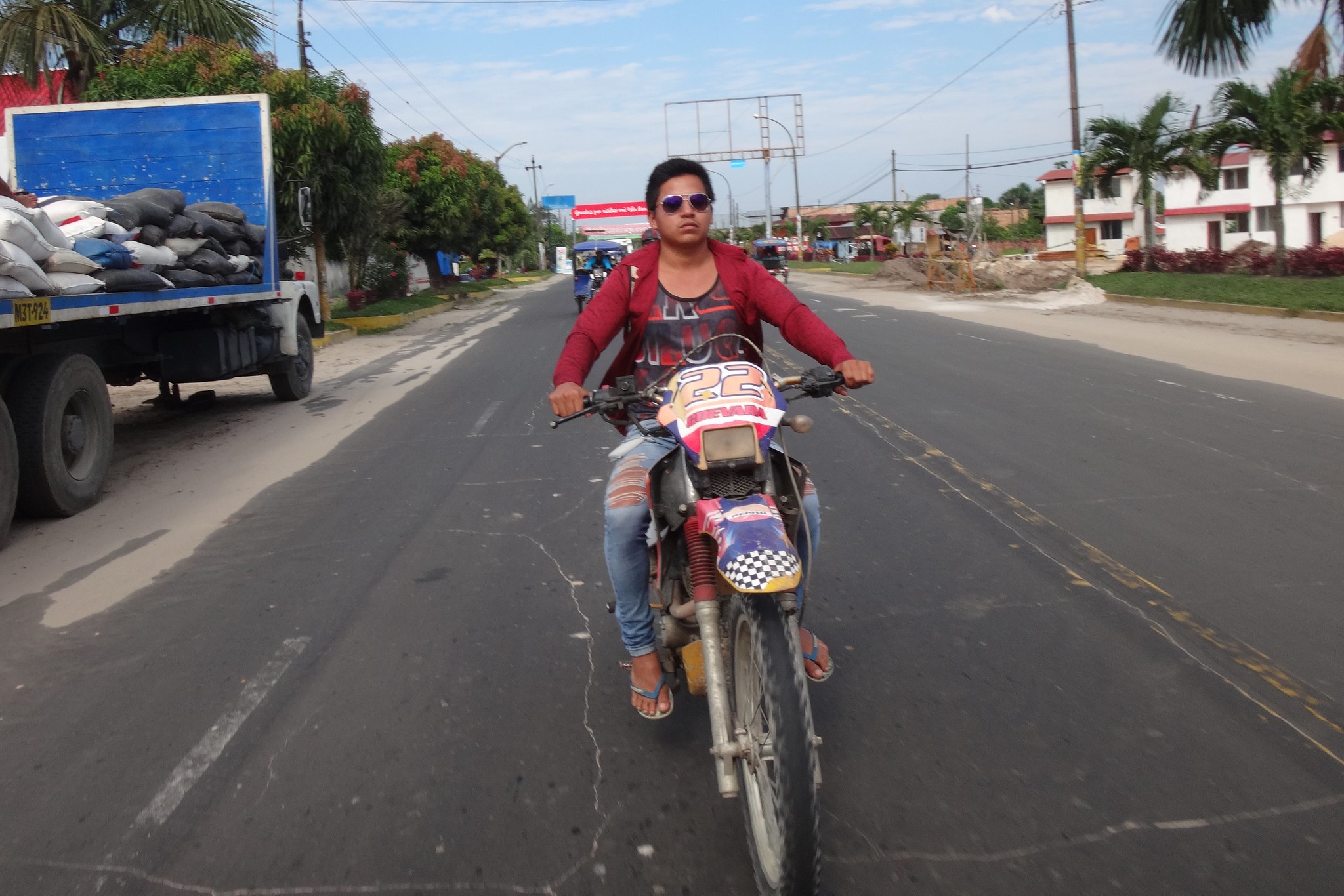
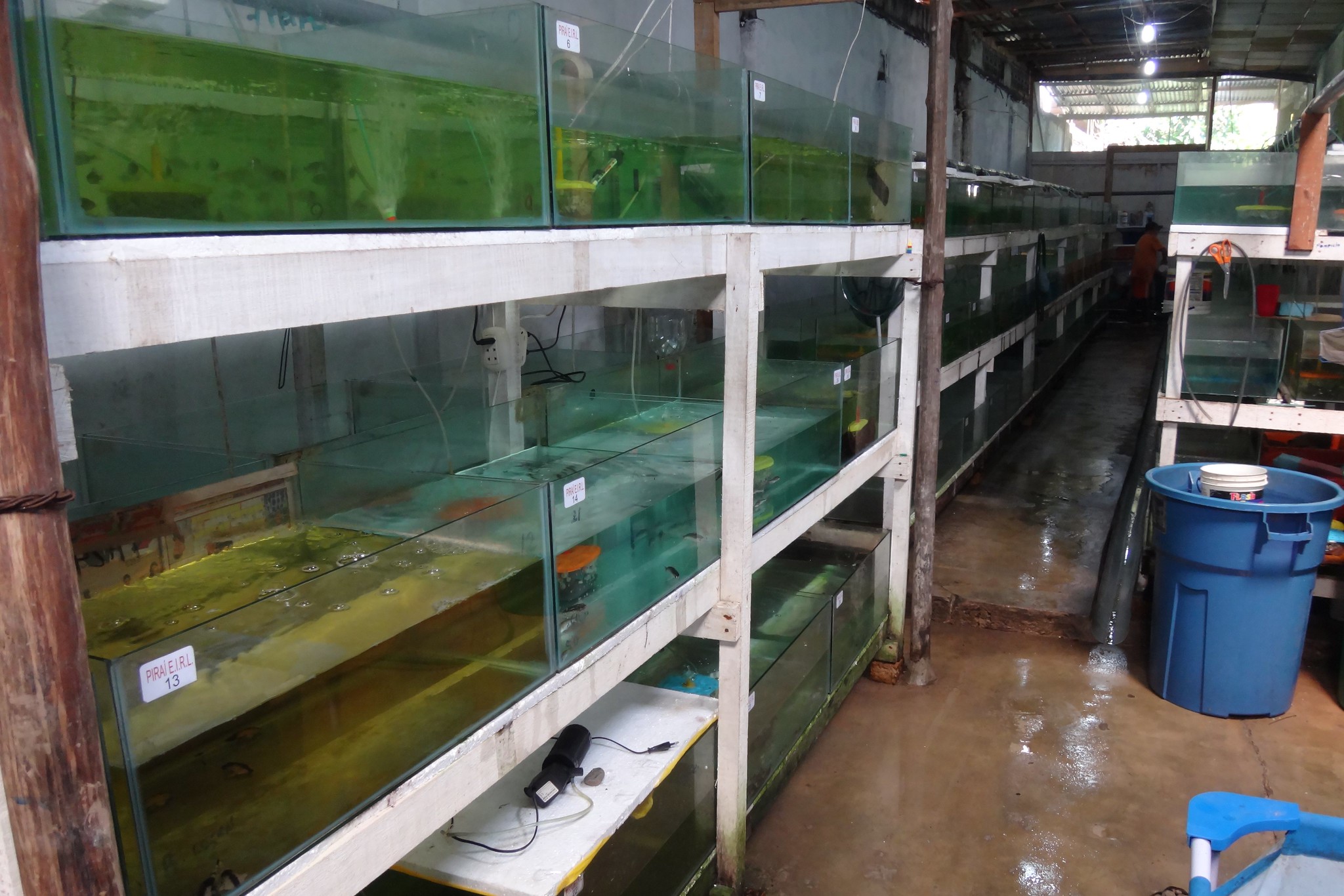
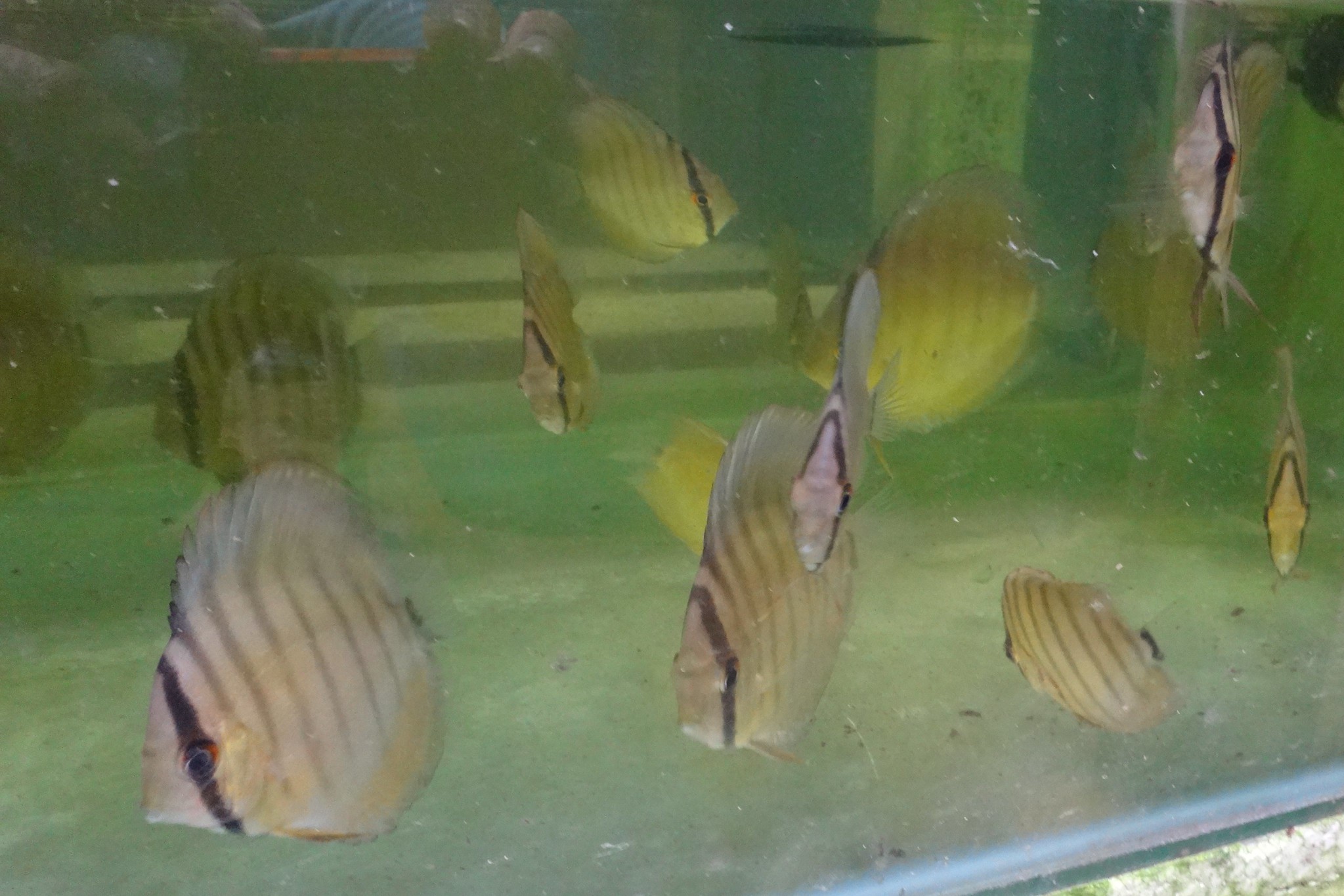
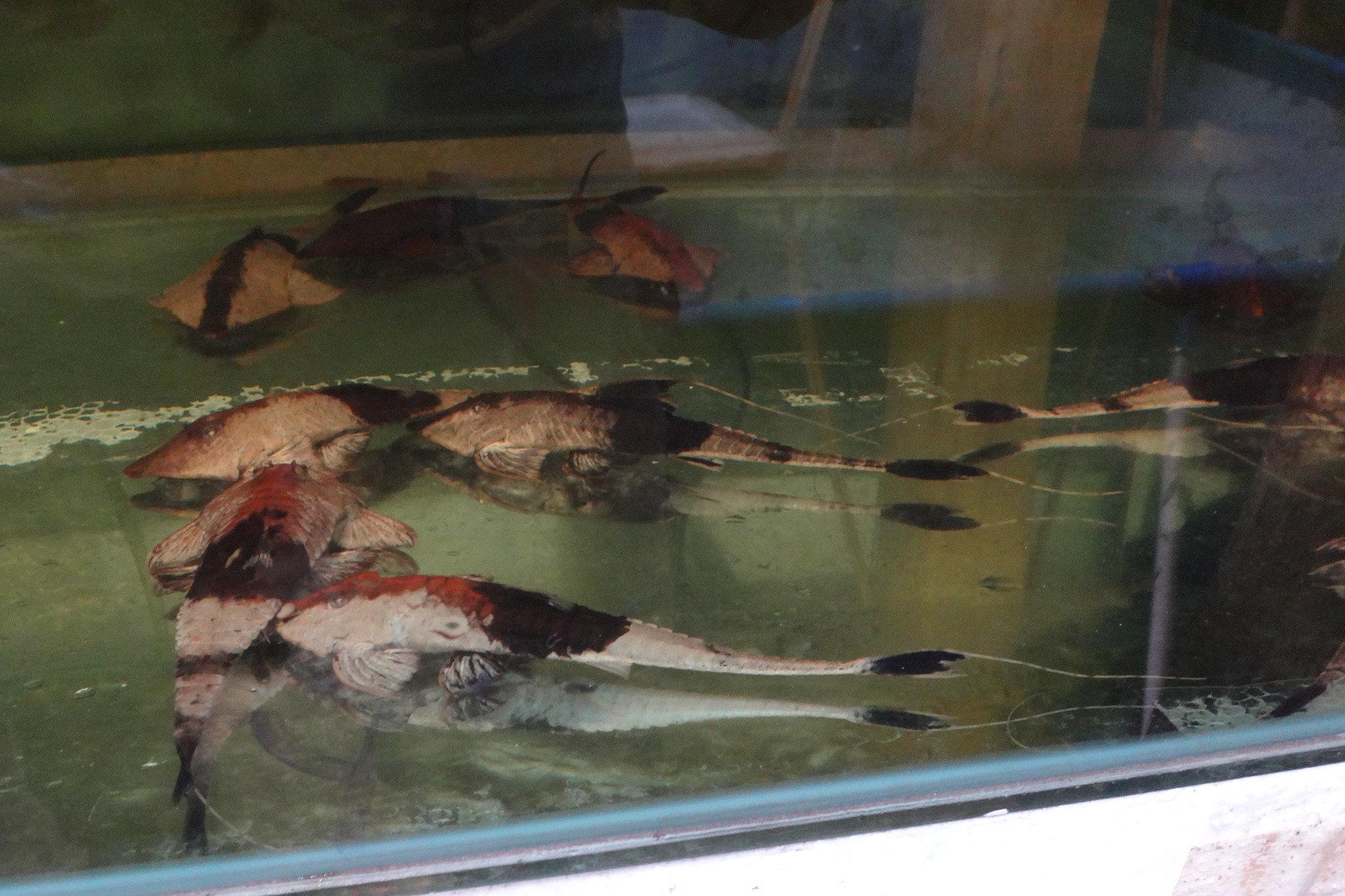
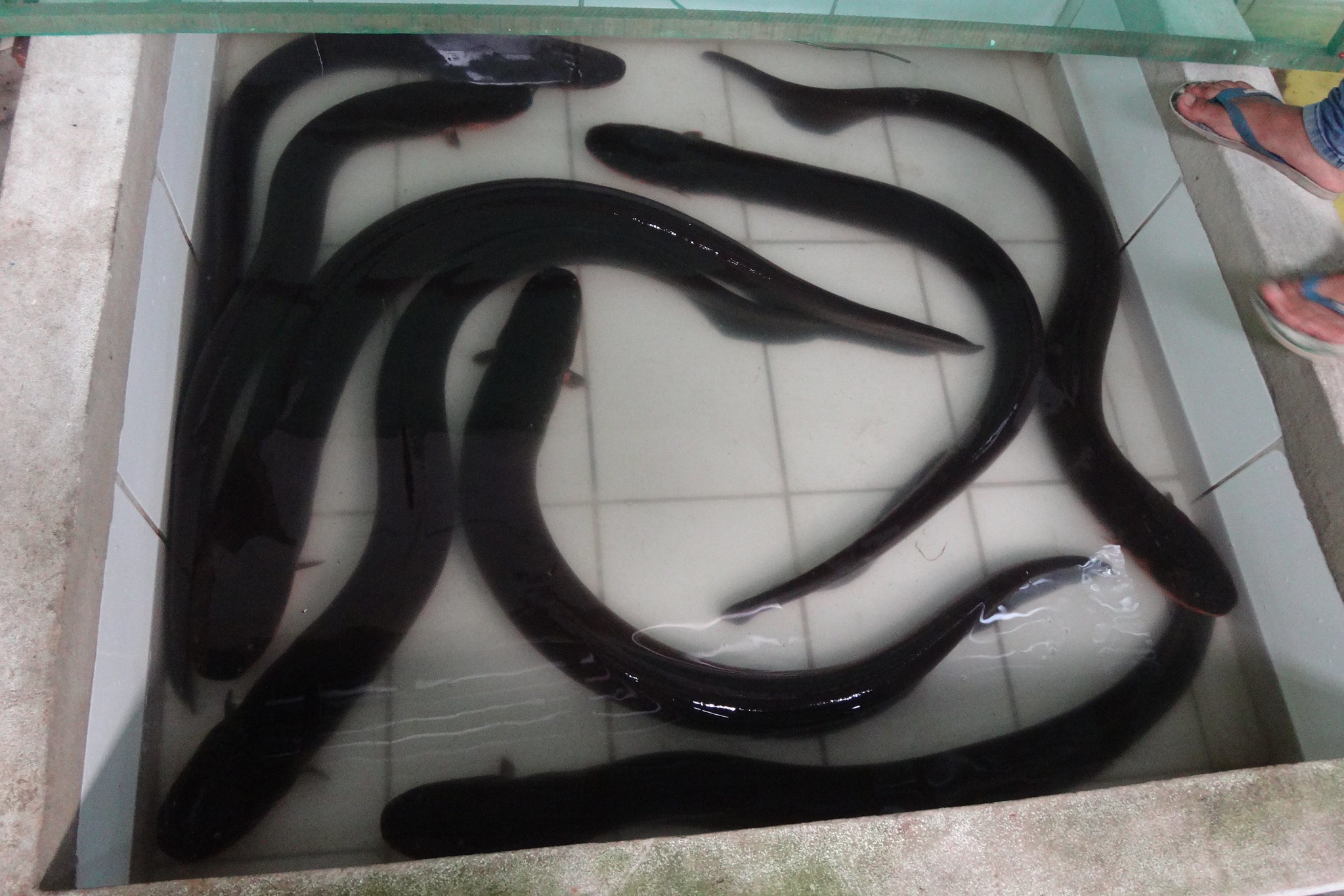
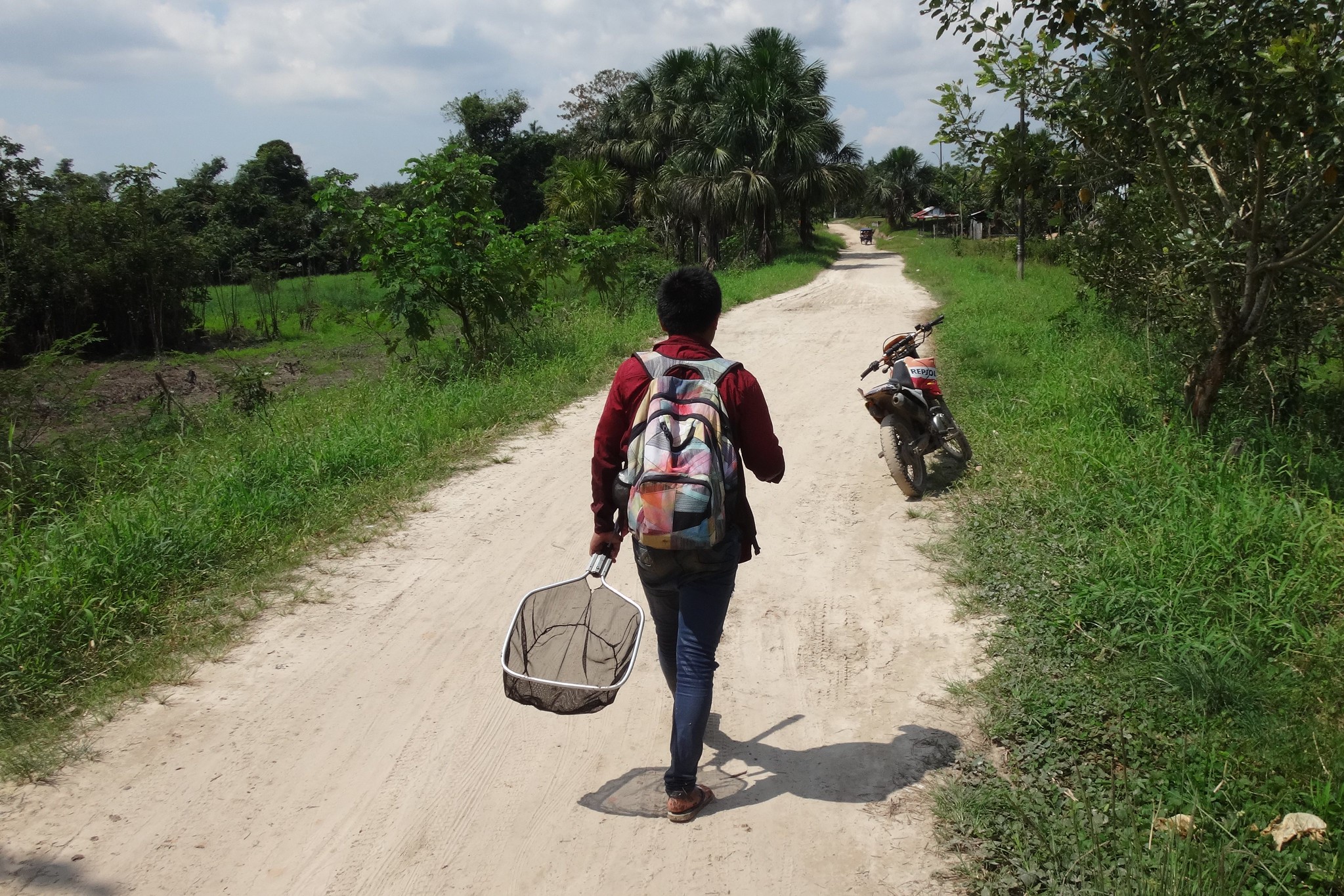
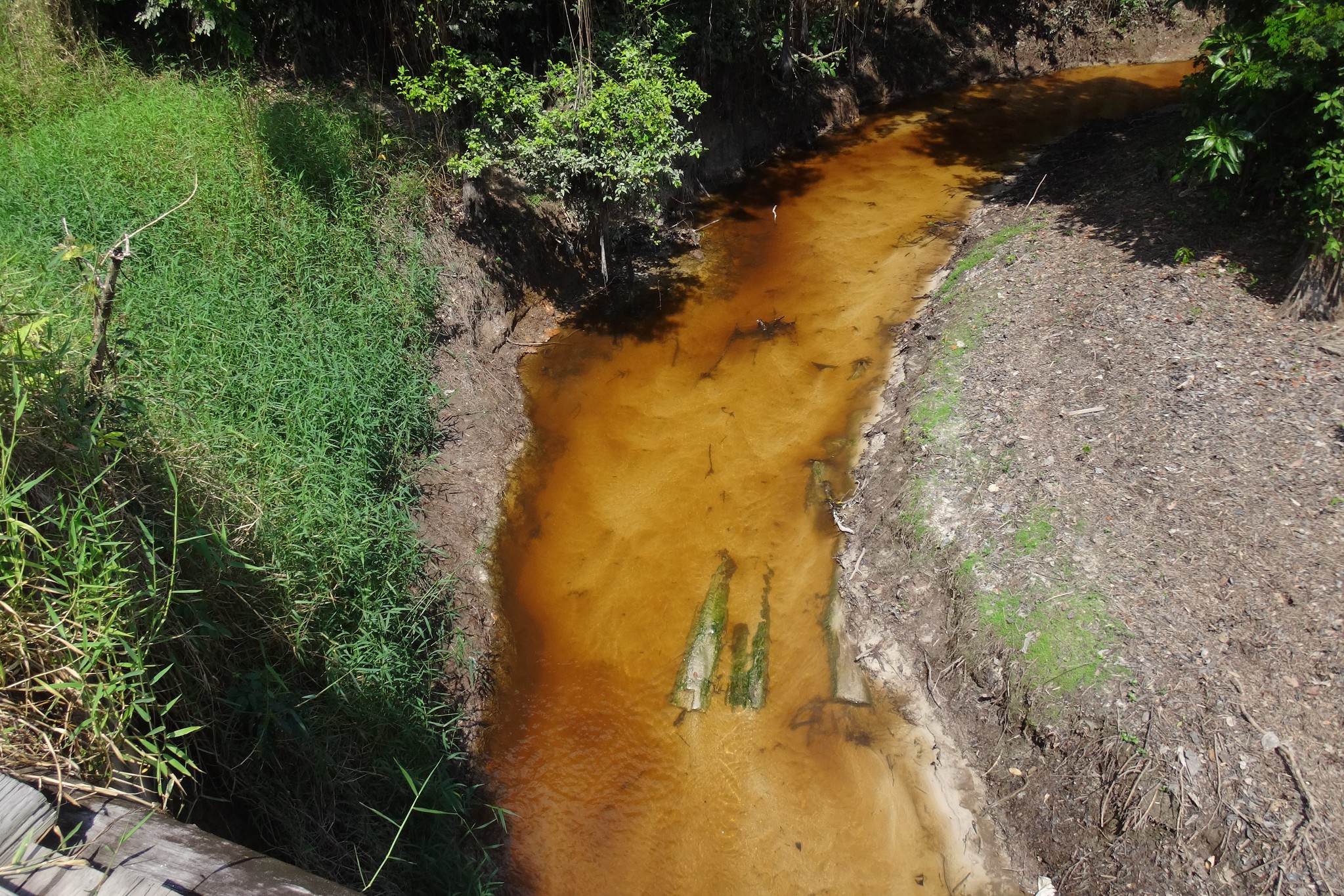
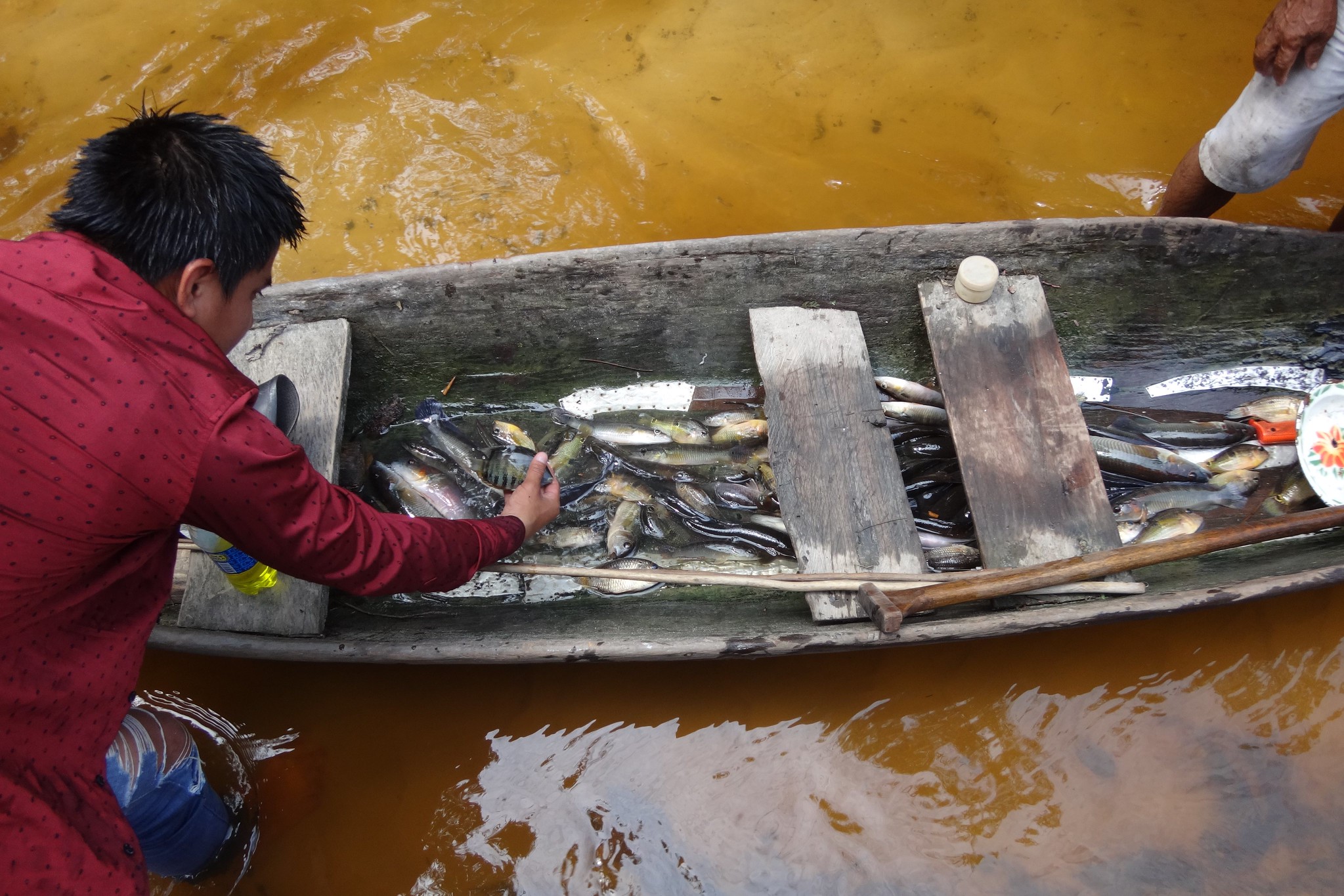
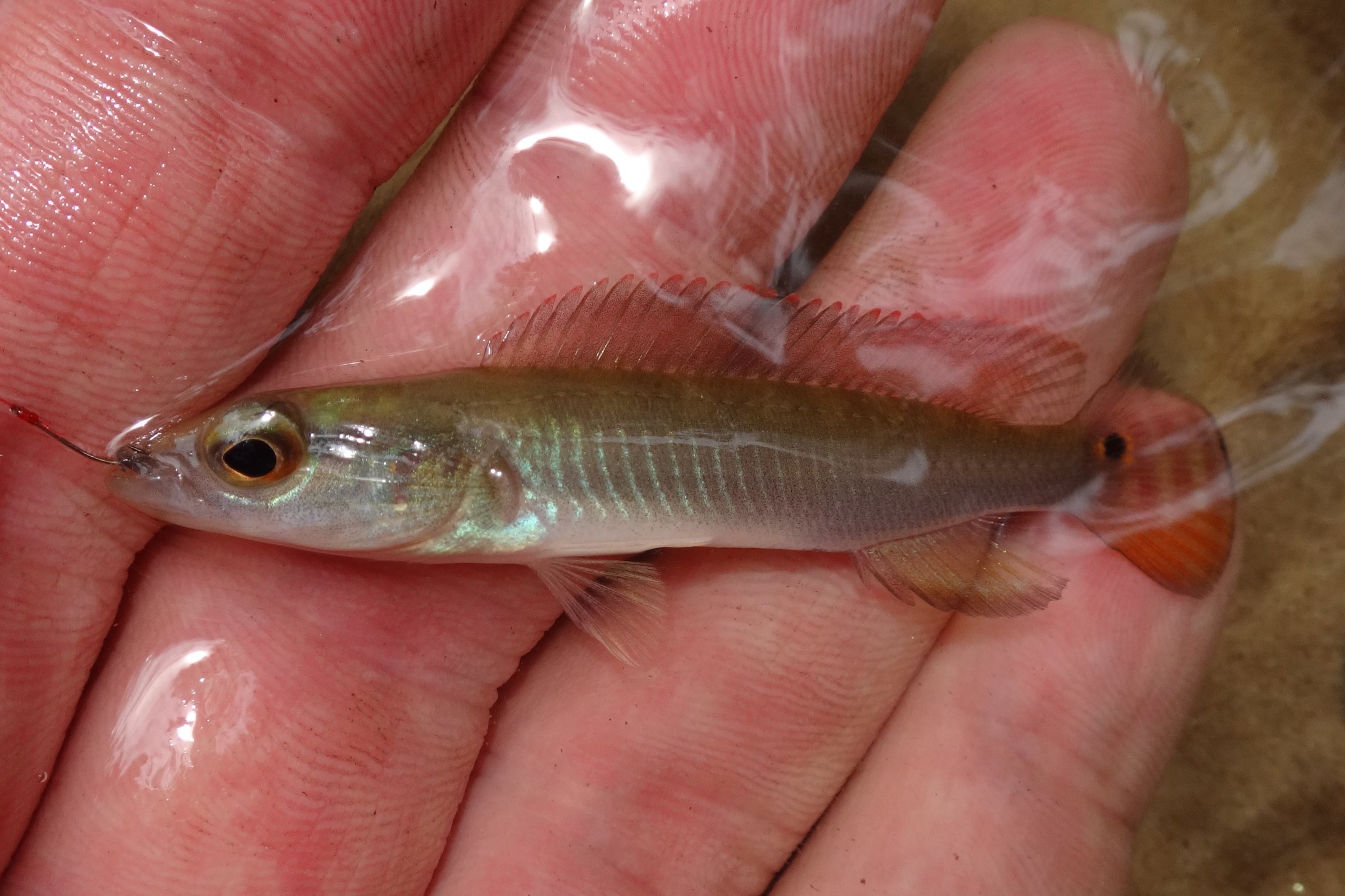
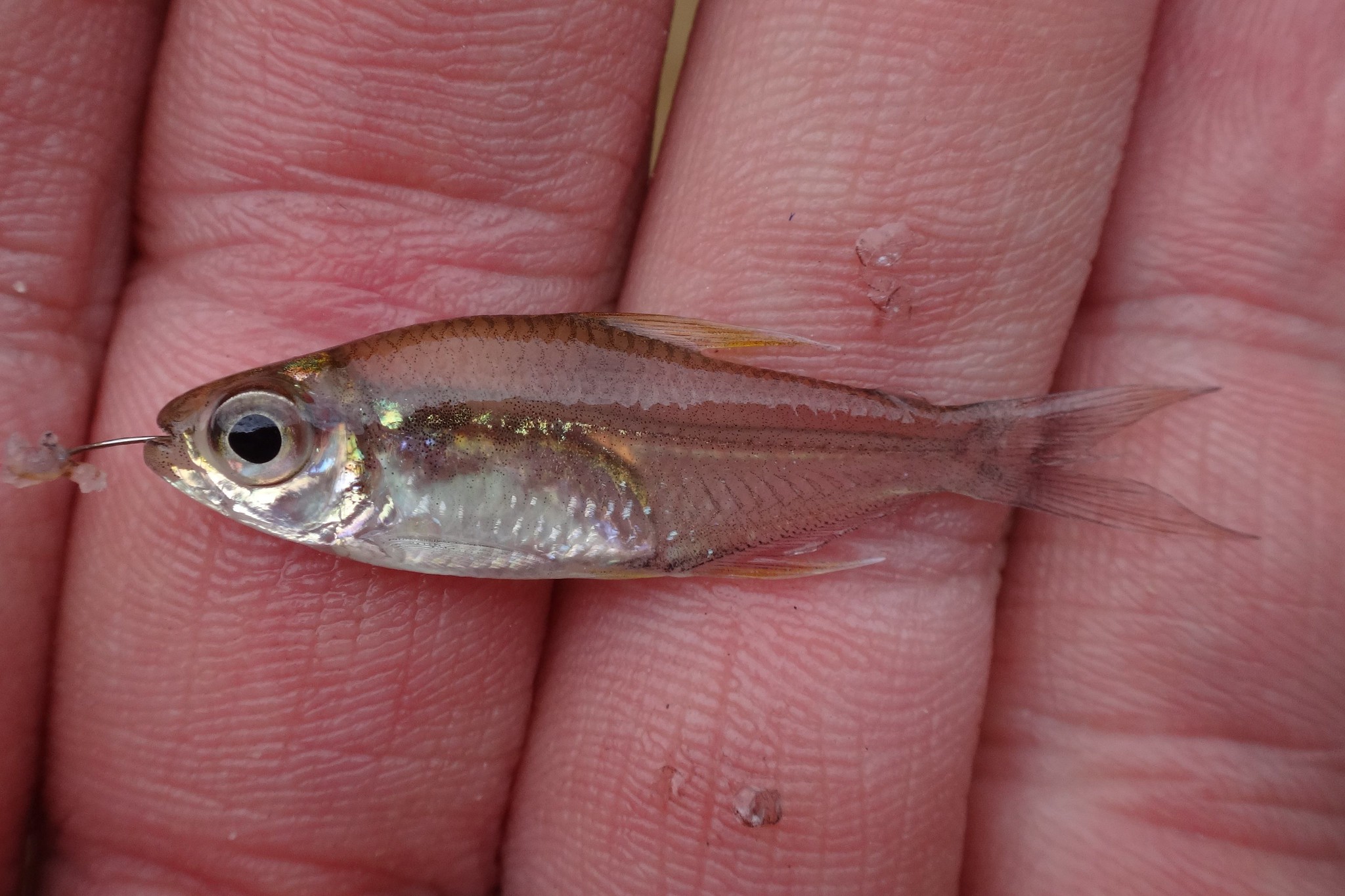

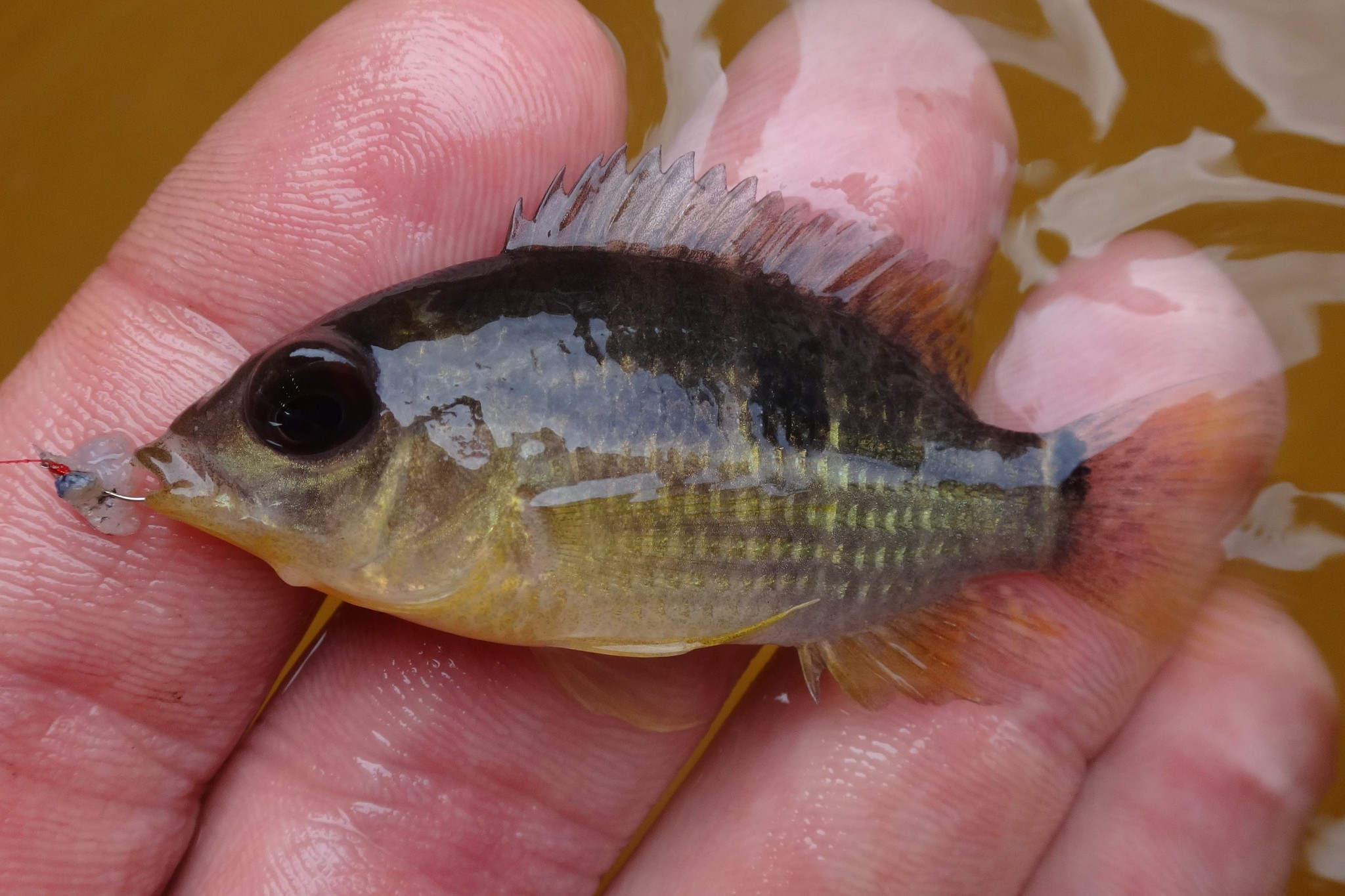
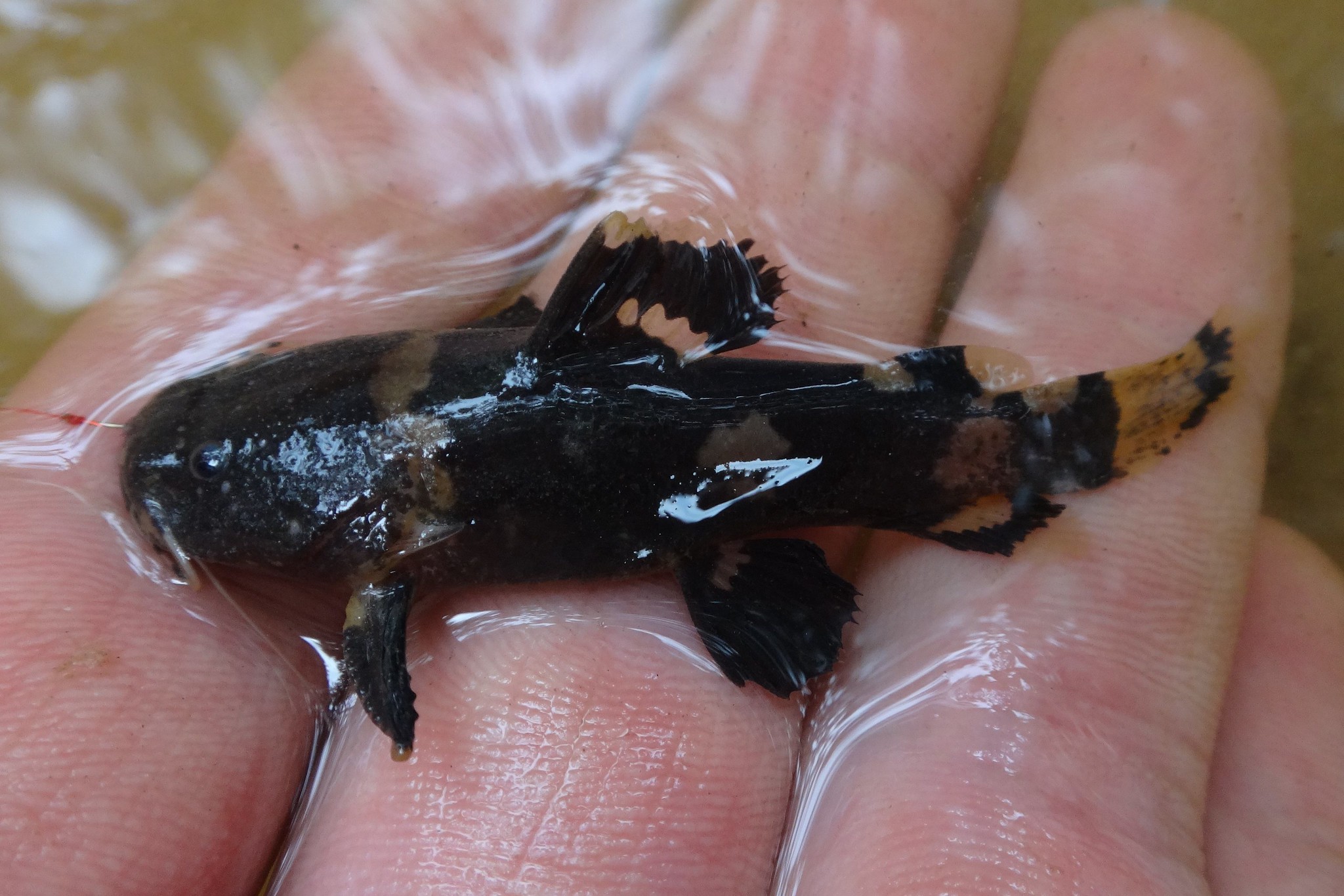
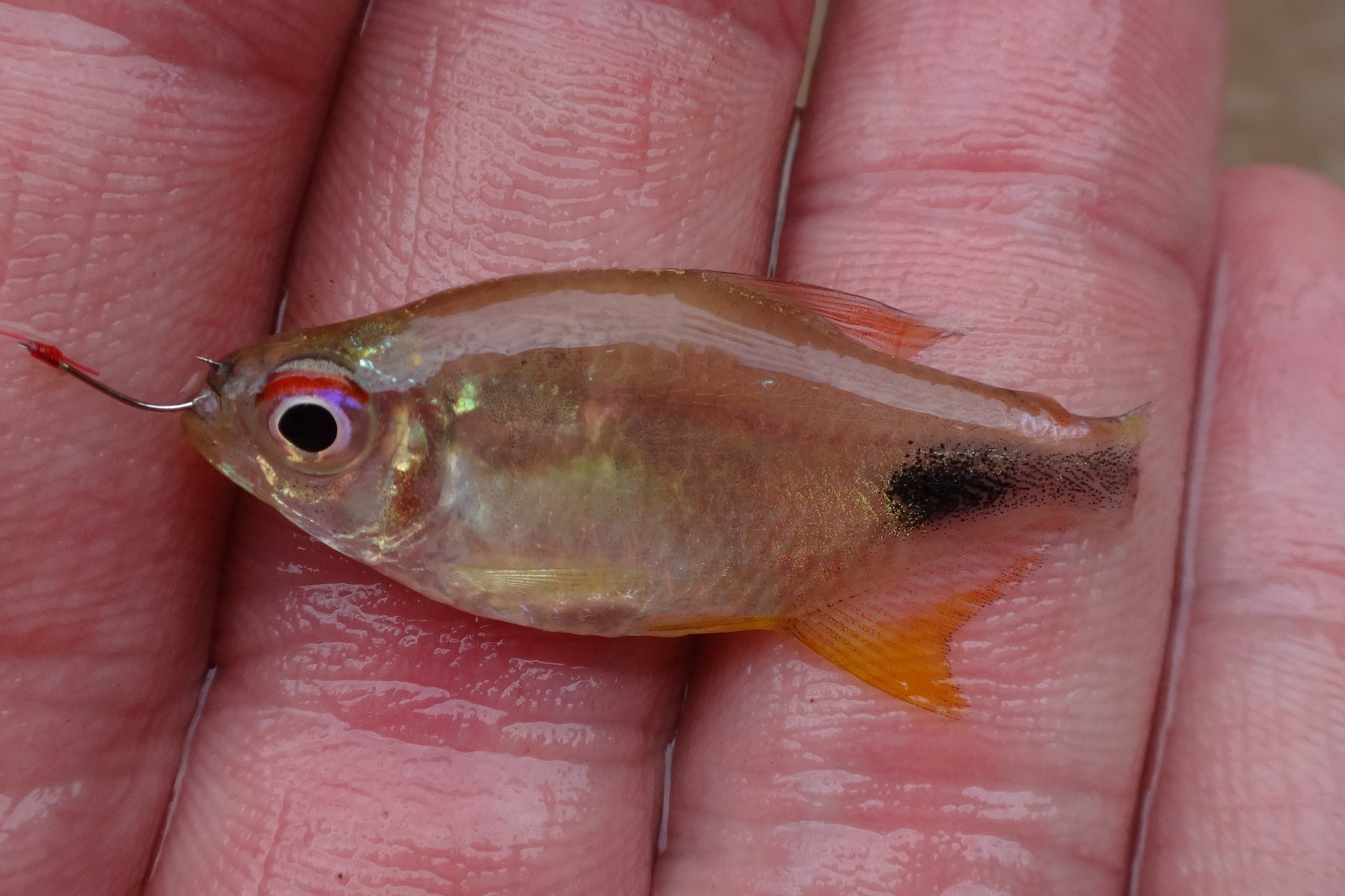
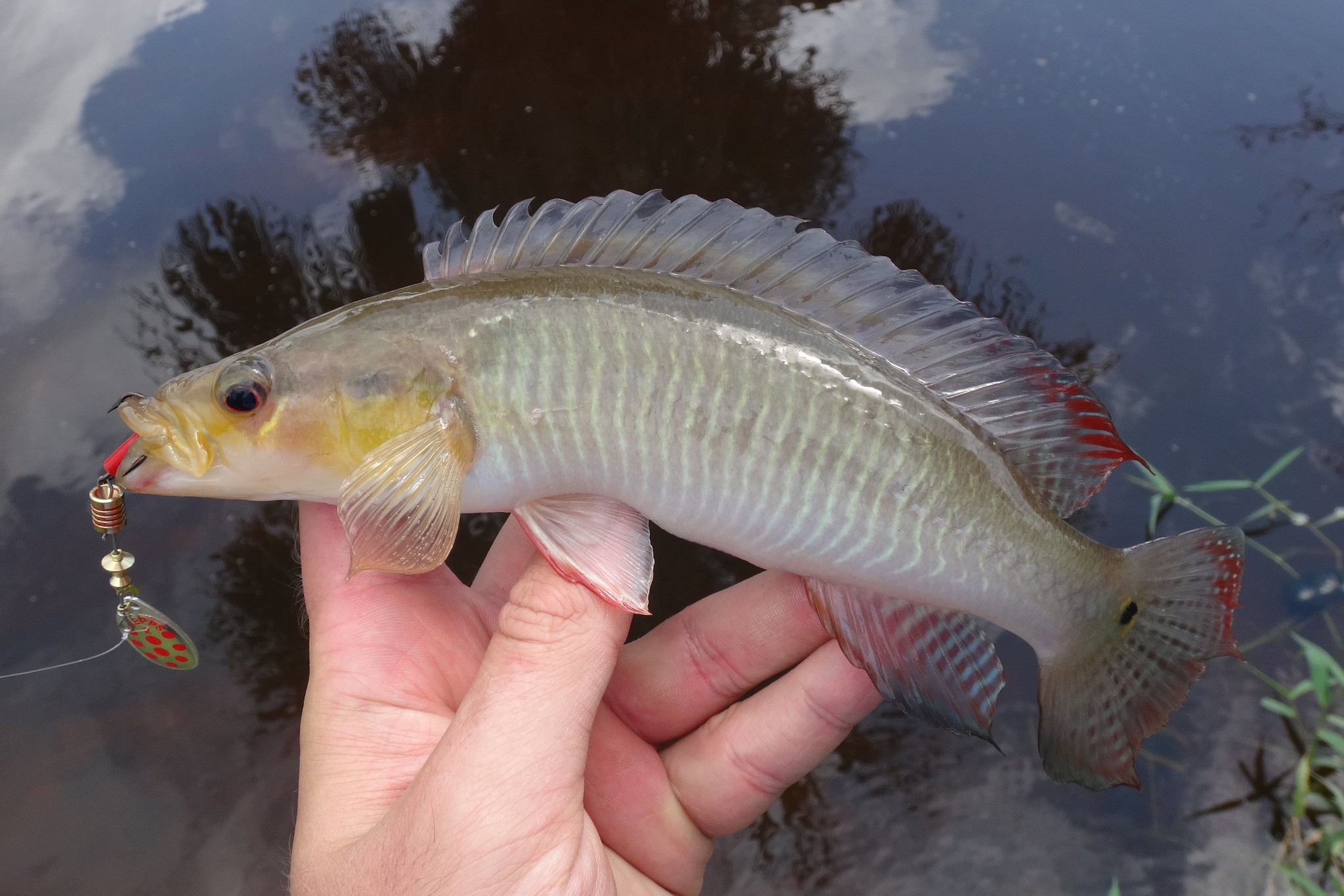
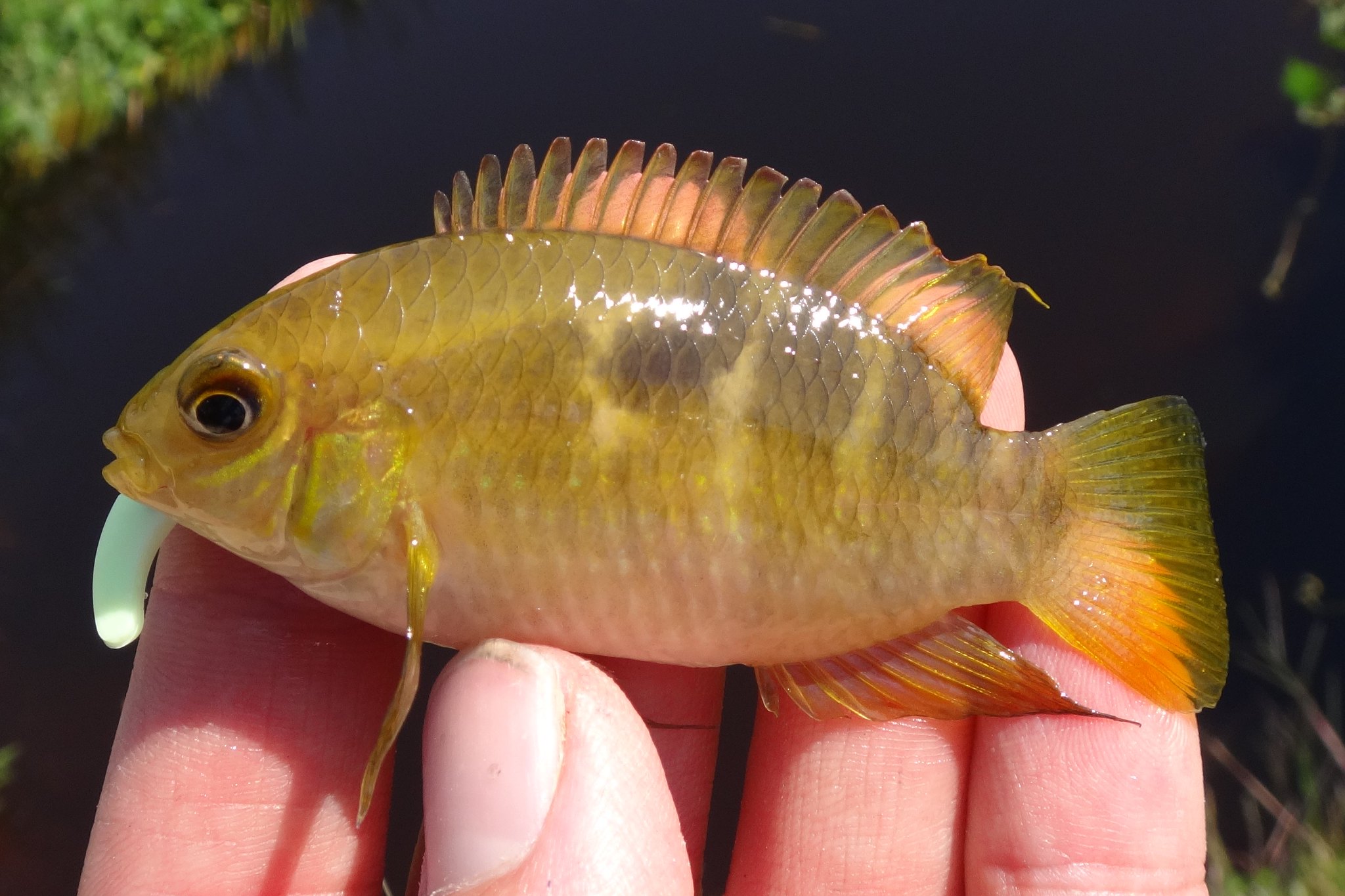
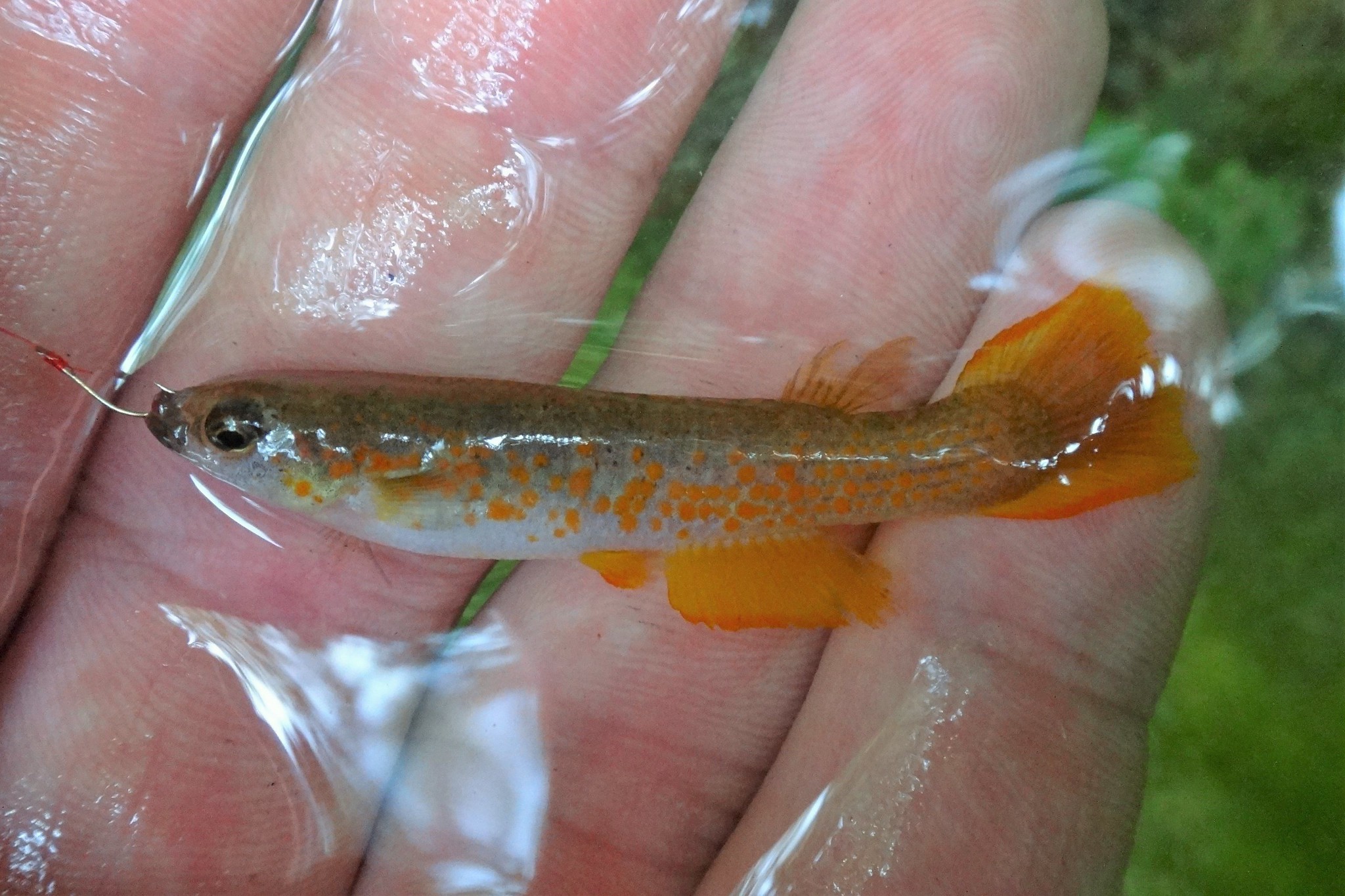
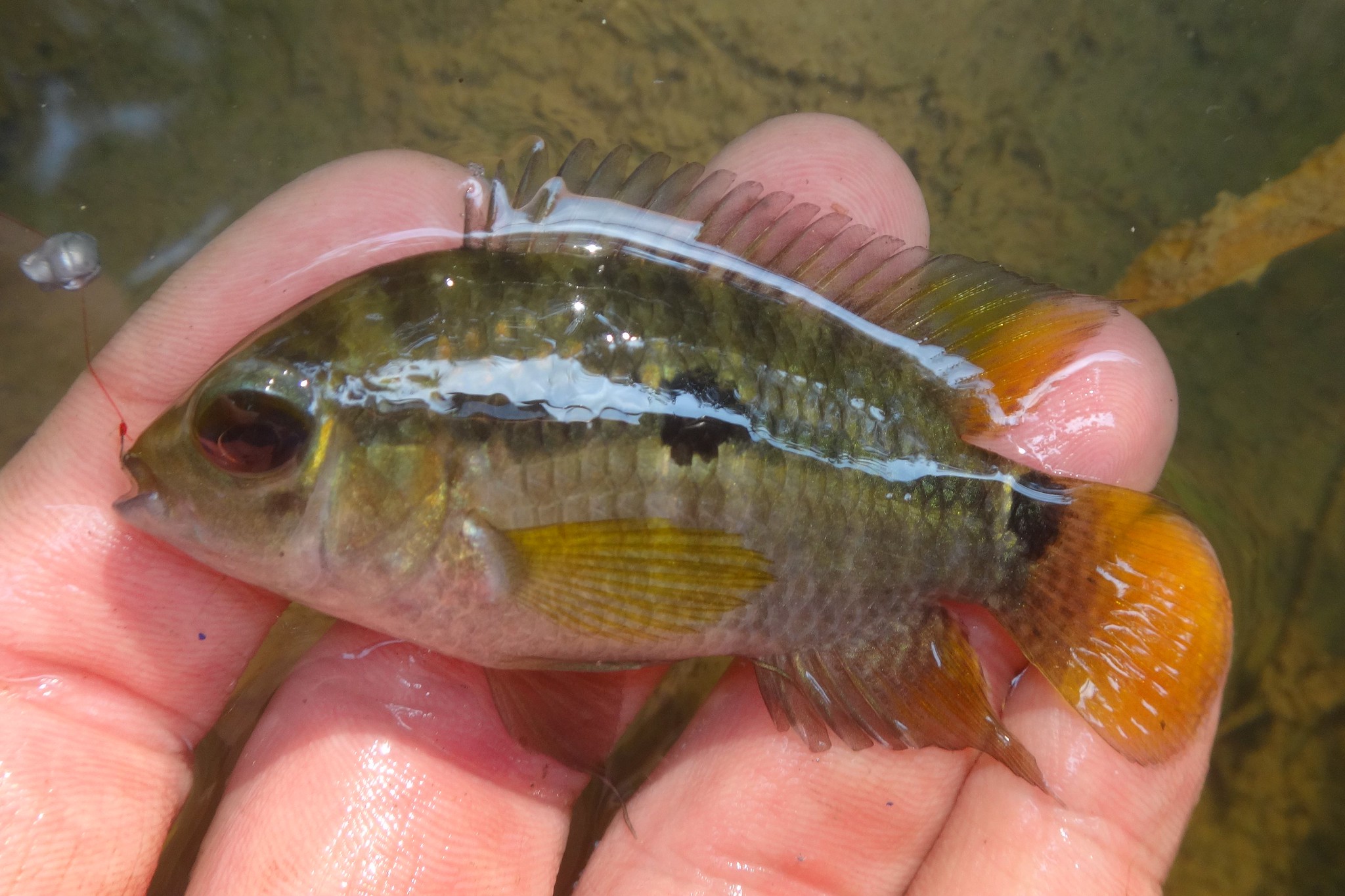
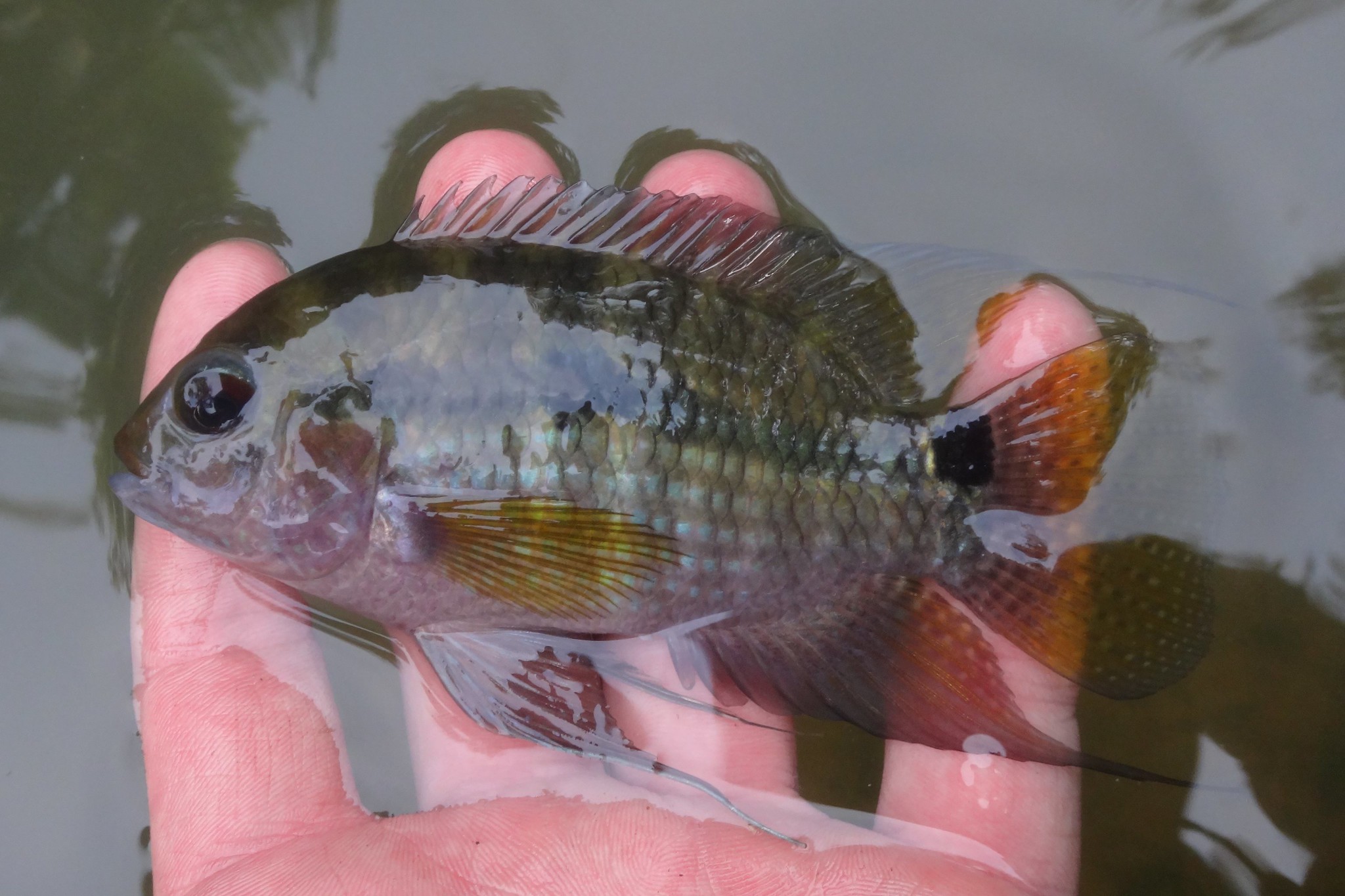
No comments:
Post a Comment
Note: Only a member of this blog may post a comment.